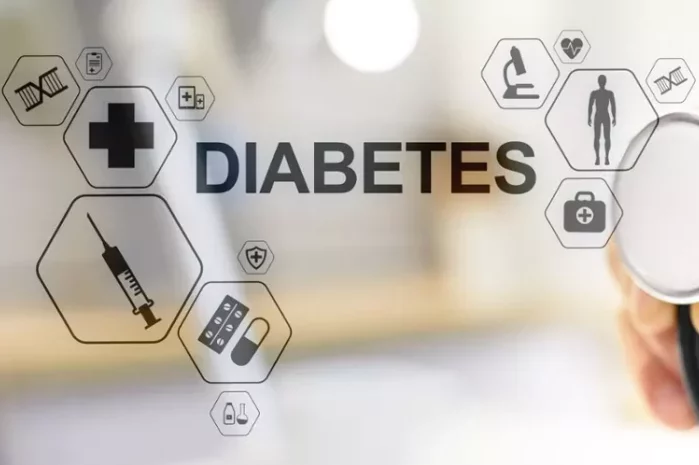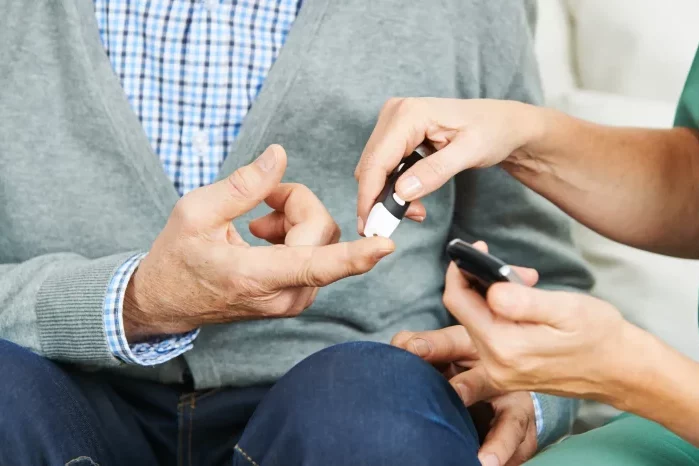Diabetes management involves a comprehensive understanding of blood glucose levels, monitoring techniques, and individualized treatment plans. Achieving the best diabetic readings is crucial for minimizing complications and enhancing the quality of life for people with diabetes. This article delves into the optimal blood glucose readings for individuals with diabetes, the importance of maintaining these levels, and strategies for achieving and sustaining them.
Understanding Blood Glucose Readings
Blood glucose readings indicate the concentration of glucose in the blood. These readings are vital for diagnosing and managing diabetes. Normal blood glucose levels vary throughout the day, influenced by factors such as food intake, physical activity, stress, and illness.
Normal Blood Glucose Levels
For individuals without diabetes, normal blood glucose levels are generally:
- Fasting (after at least 8 hours without food): 70-99 mg/dL (3.9-5.5 mmol/L)
- Two hours after eating: Less than 140 mg/dL (7.8 mmol/L)
- Random (any time of day): Less than 140 mg/dL (7.8 mmol/L)
Blood Glucose Levels in Diabetes
For individuals with diabetes, the target blood glucose levels may differ depending on various factors, including age, duration of diabetes, presence of complications, and overall health. Generally, the American Diabetes Association (ADA) recommends the following targets for adults with diabetes:
- Fasting: 80-130 mg/dL (4.4-7.2 mmol/L)
- Two hours after eating: Less than 180 mg/dL (10.0 mmol/L)
- HbA1c (average blood glucose over 2-3 months): Less than 7% (equivalent to an average blood glucose of about 154 mg/dL or 8.6 mmol/L)
Individualized Targets
It is important to note that blood glucose targets should be individualized. Some factors that may influence personalized targets include:
- Age: Older adults may have slightly higher targets to reduce the risk of hypoglycemia.
- Duration of Diabetes: Long-term diabetes may necessitate different targets.
- Complications: Presence of complications such as cardiovascular disease or neuropathy may affect targets.
- Lifestyle and Overall Health: Factors such as physical activity levels and comorbid conditions can influence optimal targets.
Importance of Maintaining Optimal Blood Glucose Levels
Maintaining optimal blood glucose levels is essential for preventing acute and chronic complications associated with diabetes. Consistently high or low blood glucose levels can have detrimental effects on various organs and systems in the body.
Short-Term Complications
- Hypoglycemia (Low Blood Glucose): Hypoglycemia occurs when blood glucose levels drop below 70 mg/dL (3.9 mmol/L). Symptoms may include shakiness, sweating, confusion, and in severe cases, loss of consciousness or seizures. Immediate treatment with fast-acting carbohydrates, such as glucose tablets or juice, is necessary.
- Hyperglycemia (High Blood Glucose): Hyperglycemia occurs when blood glucose levels rise above the target range. Symptoms may include increased thirst, frequent urination, fatigue, and blurred vision. Prolonged hyperglycemia can lead to diabetic ketoacidosis (DKA) in type 1 diabetes or hyperosmolar hyperglycemic state (HHS) in type 2 diabetes, both of which require emergency medical treatment.
Long-Term Complications
Chronic high blood glucose levels can lead to serious long-term complications, including:
- Cardiovascular Disease: High blood glucose levels can damage blood vessels and increase the risk of heart disease and stroke.
- Neuropathy: Nerve damage, particularly in the extremities, can result in pain, tingling, and loss of sensation.
- Nephropathy: Kidney damage can lead to chronic kidney disease and eventual kidney failure.
- Retinopathy: Damage to the blood vessels in the eyes can result in vision problems and blindness.
- Foot Problems: Poor circulation and nerve damage can lead to foot ulcers and infections, sometimes necessitating amputation.
Strategies for Achieving and Sustaining Optimal Blood Glucose Levels
Achieving and maintaining optimal blood glucose levels requires a multifaceted approach, including lifestyle modifications, medication management, and regular monitoring.
1. Healthy Eating
A balanced diet is fundamental for blood glucose control. Key dietary strategies include:
- Carbohydrate Management: Monitoring carbohydrate intake is crucial as carbohydrates have the most significant impact on blood glucose levels. Choosing complex carbohydrates, such as whole grains, vegetables, and legumes, can help maintain stable blood glucose levels.
- Portion Control: Eating appropriate portion sizes helps prevent overeating and subsequent blood glucose spikes.
- Balanced Meals: Including a mix of carbohydrates, protein, and healthy fats in each meal can promote balanced blood glucose levels.
- Glycemic Index: Choosing foods with a low glycemic index (GI) can help manage blood glucose levels. Low-GI foods are digested and absorbed more slowly, leading to gradual increases in blood glucose.
2. Regular Physical Activity
Physical activity enhances insulin sensitivity, helps manage weight, and improves cardiovascular health. Recommendations include:
- Aerobic Exercise: Aim for at least 150 minutes of moderate-intensity aerobic exercise per week, such as brisk walking, cycling, or swimming.
- Strength Training: Include resistance exercises, such as weightlifting or bodyweight exercises, at least twice a week.
- Flexibility and Balance Exercises: Incorporate stretching and balance exercises to enhance overall fitness and prevent injuries.
3. Medication Management
For many individuals with diabetes, medication is a crucial component of blood glucose management. Medications include:
- Oral Medications: Various oral medications help control blood glucose levels by increasing insulin production, enhancing insulin sensitivity, or reducing glucose production by the liver.
- Insulin Therapy: Insulin is essential for individuals with type 1 diabetes and may be necessary for those with type 2 diabetes who do not achieve target levels with oral medications alone. Insulin can be administered via injections or an insulin pump.
- Non-Insulin Injectables: Other injectable medications, such as GLP-1 receptor agonists, can help manage blood glucose levels by increasing insulin secretion and decreasing appetite.
4. Regular Blood Glucose Monitoring
Frequent blood glucose monitoring provides valuable information for managing diabetes and making necessary adjustments to treatment plans. Monitoring methods include:
- Self-Monitoring of Blood Glucose (SMBG): Individuals use a blood glucose meter to test their blood glucose levels at various times throughout the day. Regular SMBG helps track patterns and identify trends.
- Continuous Glucose Monitoring (CGM): CGM systems use a sensor inserted under the skin to continuously measure blood glucose levels. CGMs provide real-time data and trend information, allowing for more precise adjustments to insulin and lifestyle choices.
5. Stress Management
Stress can significantly impact blood glucose levels. Effective stress management techniques include:
- Mindfulness and Relaxation: Practices such as meditation, deep breathing, and yoga can help reduce stress.
- Physical Activity: Regular exercise is an effective way to manage stress and improve overall well-being.
- Sleep Hygiene: Prioritizing adequate and restful sleep supports overall health and blood glucose control.
6. Education and Support
Education and support from healthcare providers, diabetes educators, and support groups are invaluable for managing diabetes. Key educational topics include:
- Understanding Diabetes: Comprehensive knowledge of diabetes, its complications, and management strategies.
- Proper Use of Medications: Guidance on medication administration, potential side effects, and interactions.
- Healthy Lifestyle Choices: Tips for making informed food choices, incorporating physical activity, and managing stress.
Monitoring Long-Term Blood Glucose Control
In addition to daily blood glucose monitoring, long-term control is assessed using the HbA1c test.
HbA1c Test
The HbA1c test measures the percentage of hemoglobin that is glycated (coated with sugar). It reflects the average blood glucose levels over the past 2-3 months. The ADA recommends an HbA1c target of less than 7% for most adults with diabetes. However, individualized targets may be set based on factors such as age, duration of diabetes, and presence of complications.
Interpreting HbA1c Results
- Normal: Below 5.7%
- Prediabetes: 5.7% to 6.4%
- Diabetes: 6.5% or higher
Benefits of HbA1c Monitoring
Regular HbA1c testing helps track long-term blood glucose control and assess the effectiveness of diabetes management plans. It also provides valuable information for making necessary adjustments to medications, diet, and lifestyle.
See also: What’s the Best Blood Sugar Monitor: A Comprehensive Guide
Conclusion
Achieving and maintaining optimal blood glucose levels is crucial for individuals with diabetes to prevent complications and improve quality of life. A comprehensive approach, including healthy eating, regular physical activity, medication management, and frequent monitoring, is essential for successful diabetes management. Individualized targets and personalized treatment plans, supported by education and healthcare provider guidance, empower individuals to achieve the best possible diabetic readings and live healthier, more fulfilling lives.
Related topics:
What’s the Causes of High Blood Sugar Levels



























